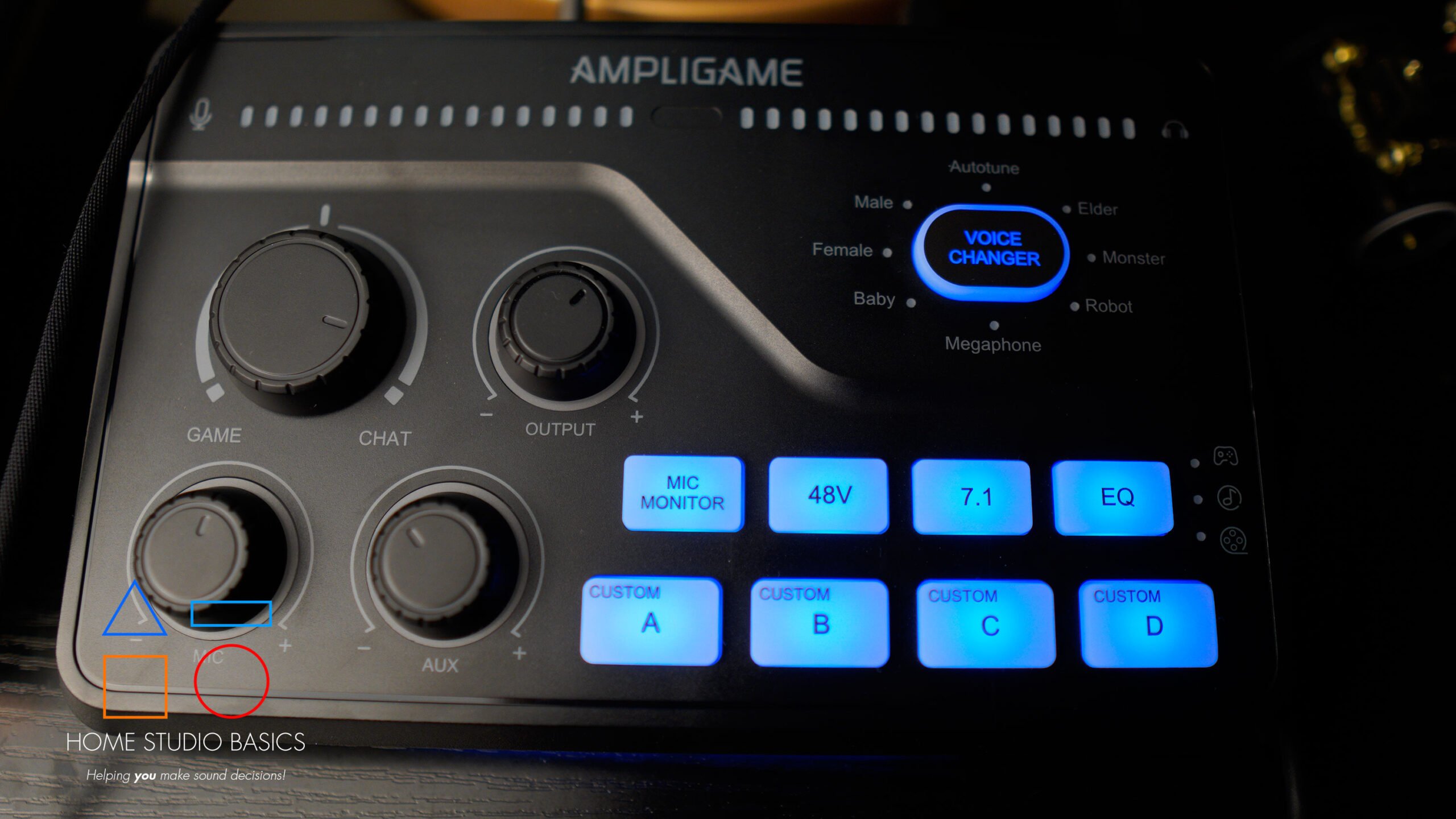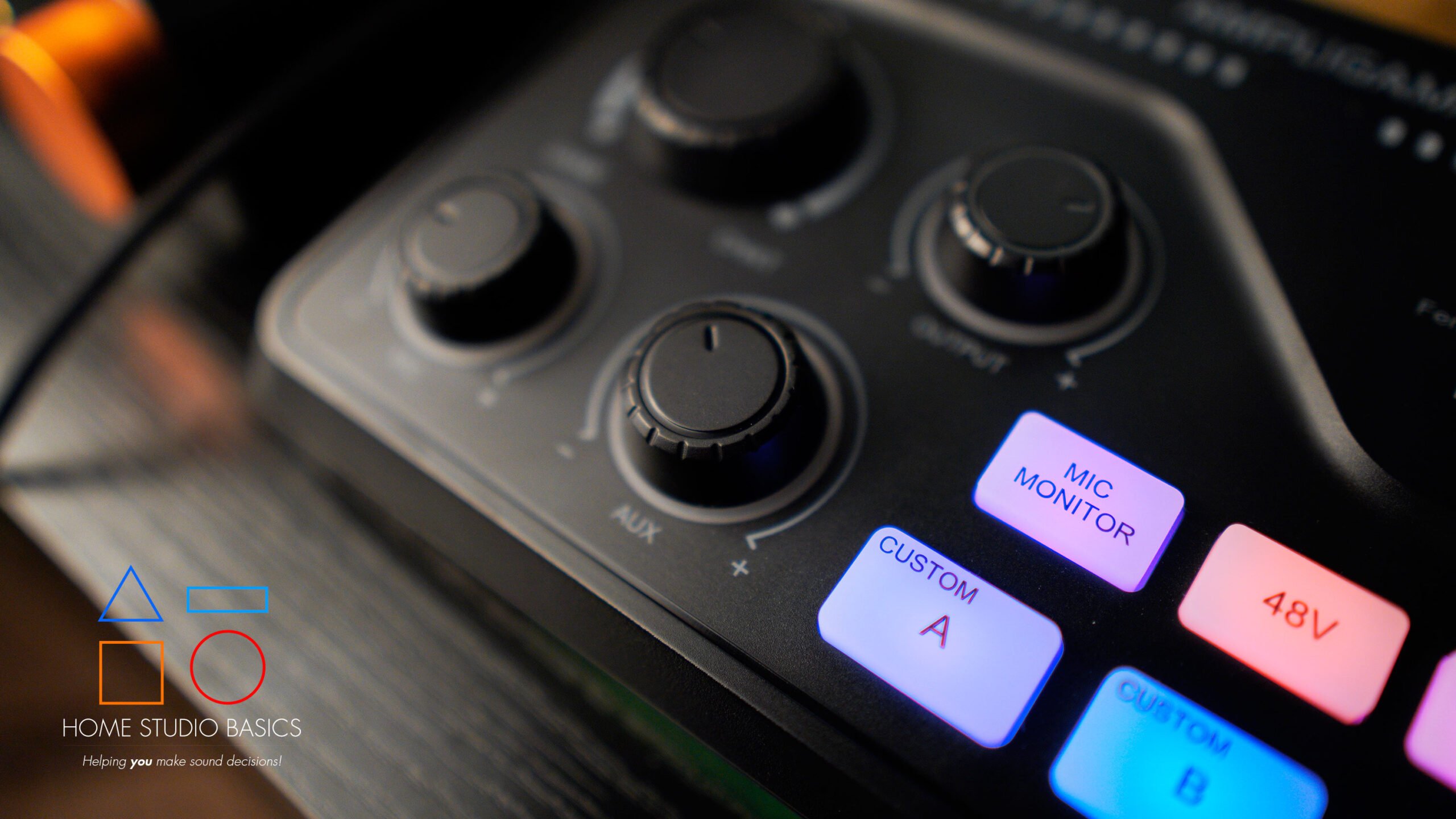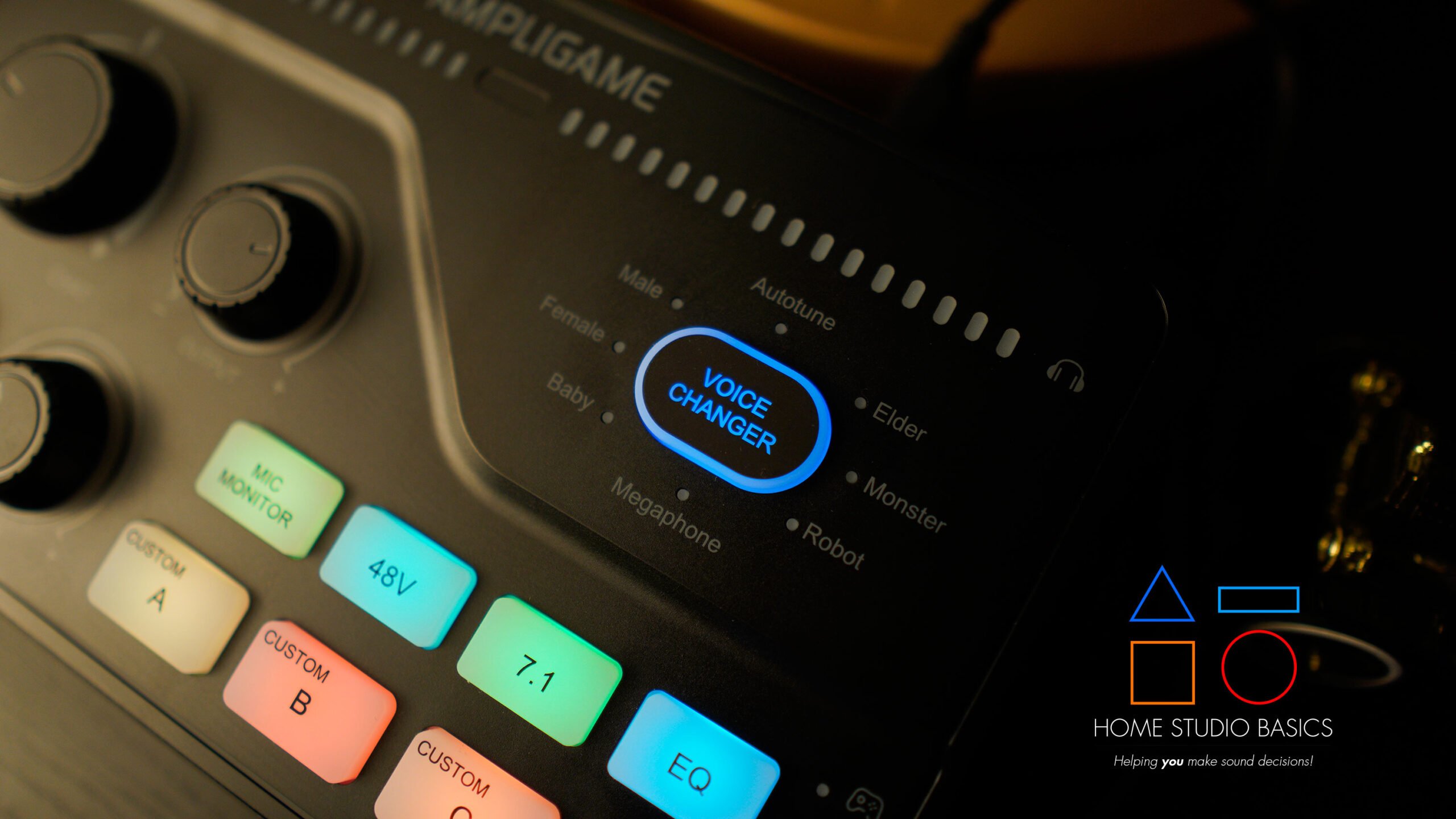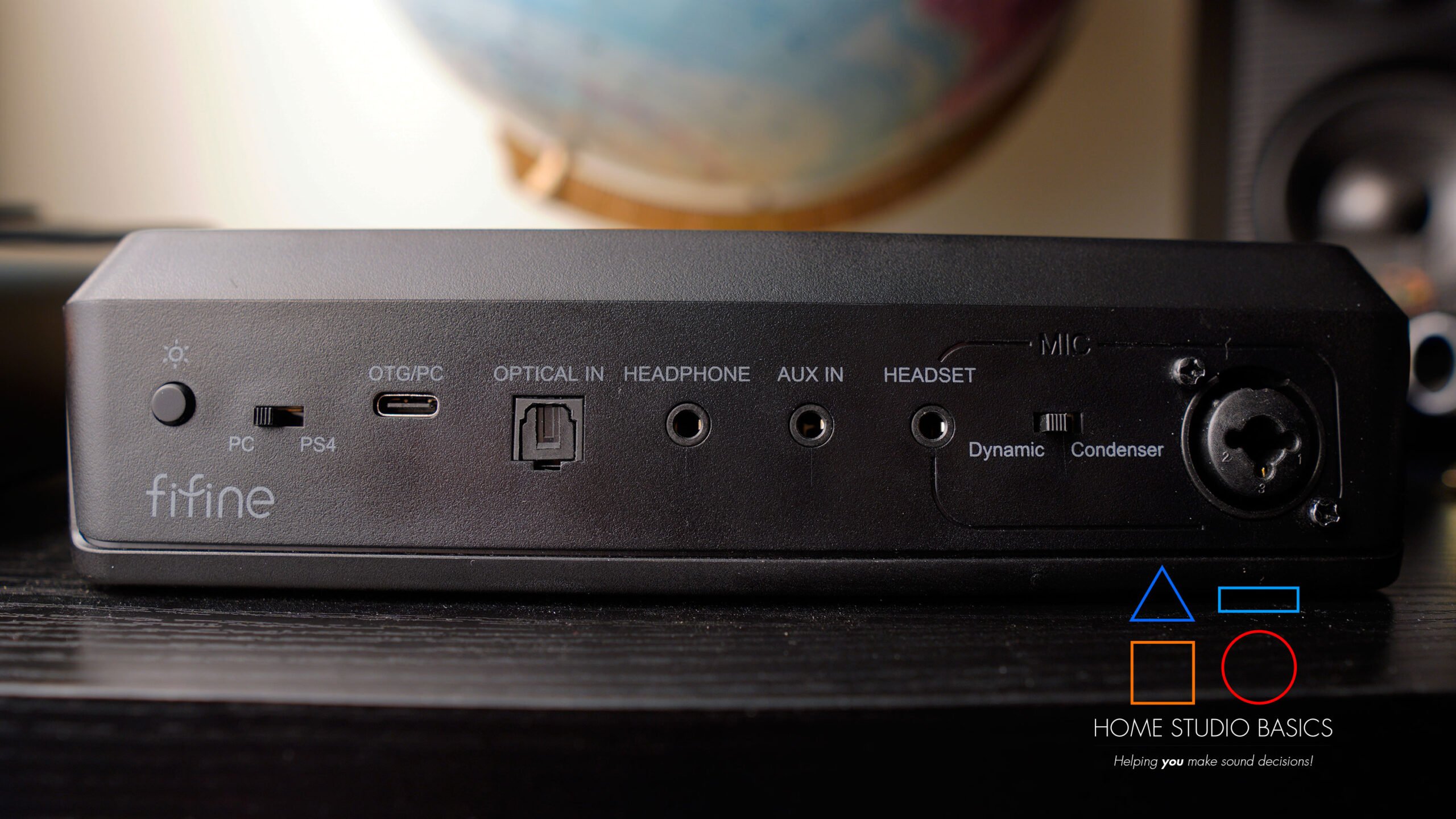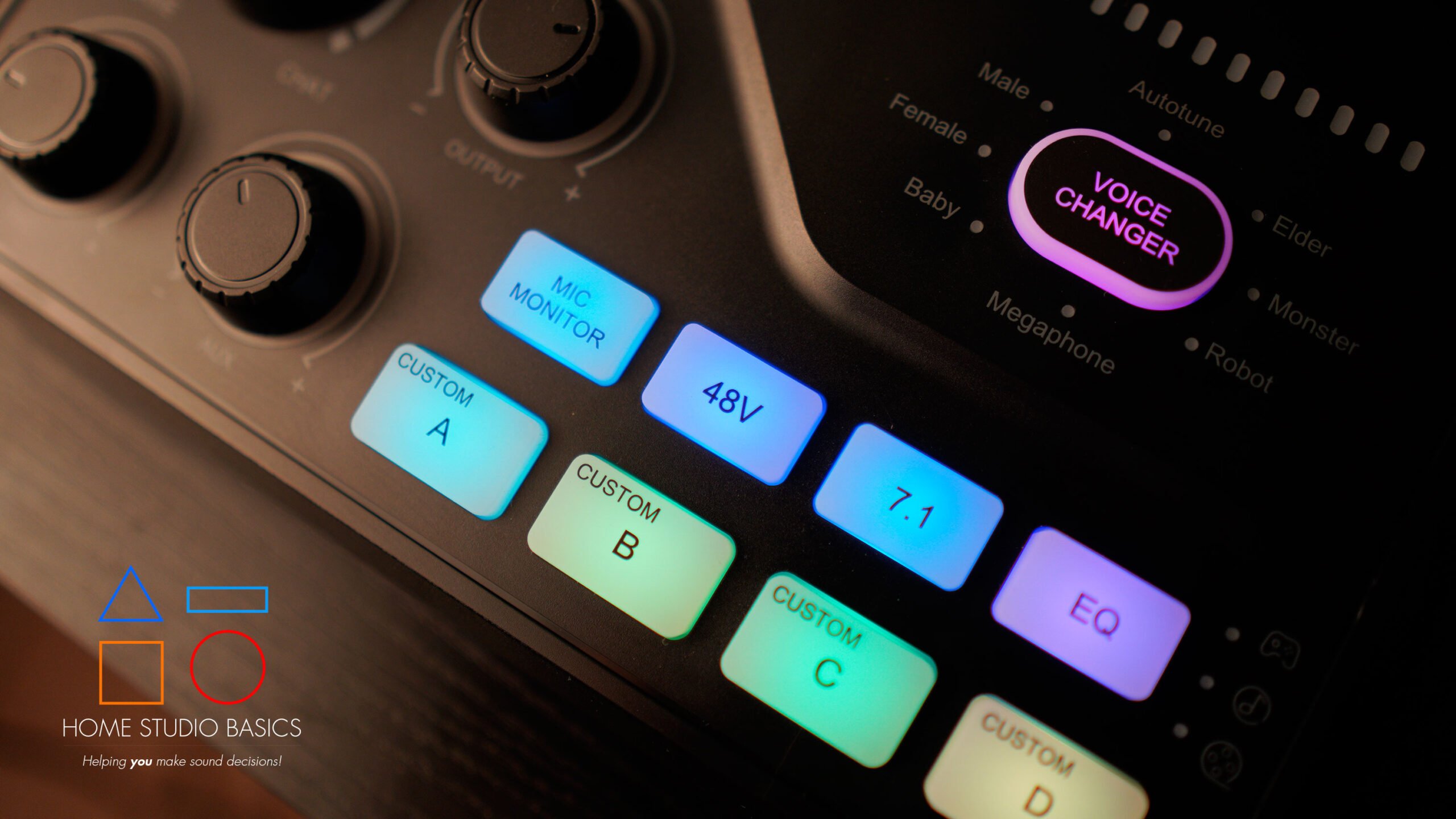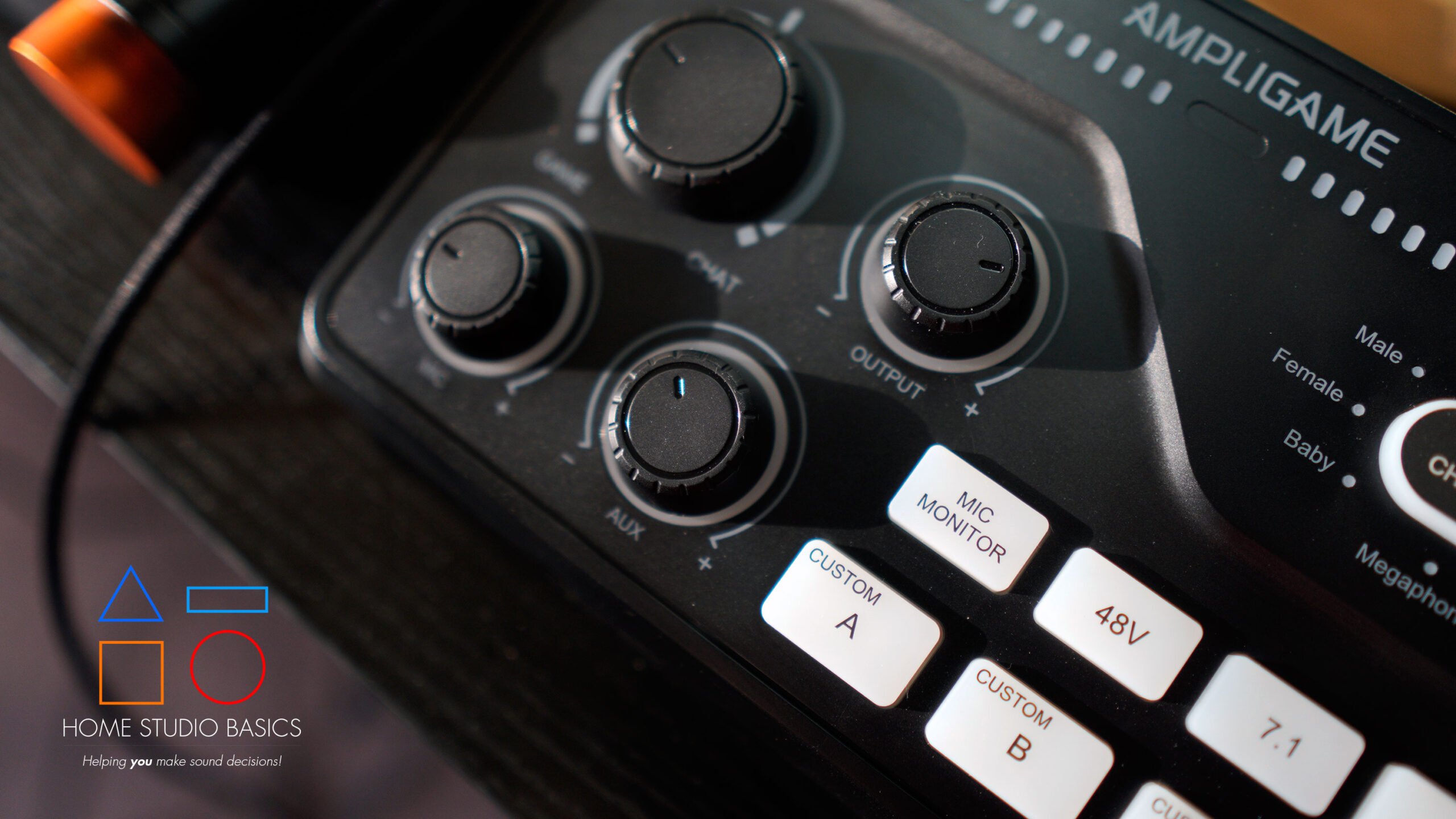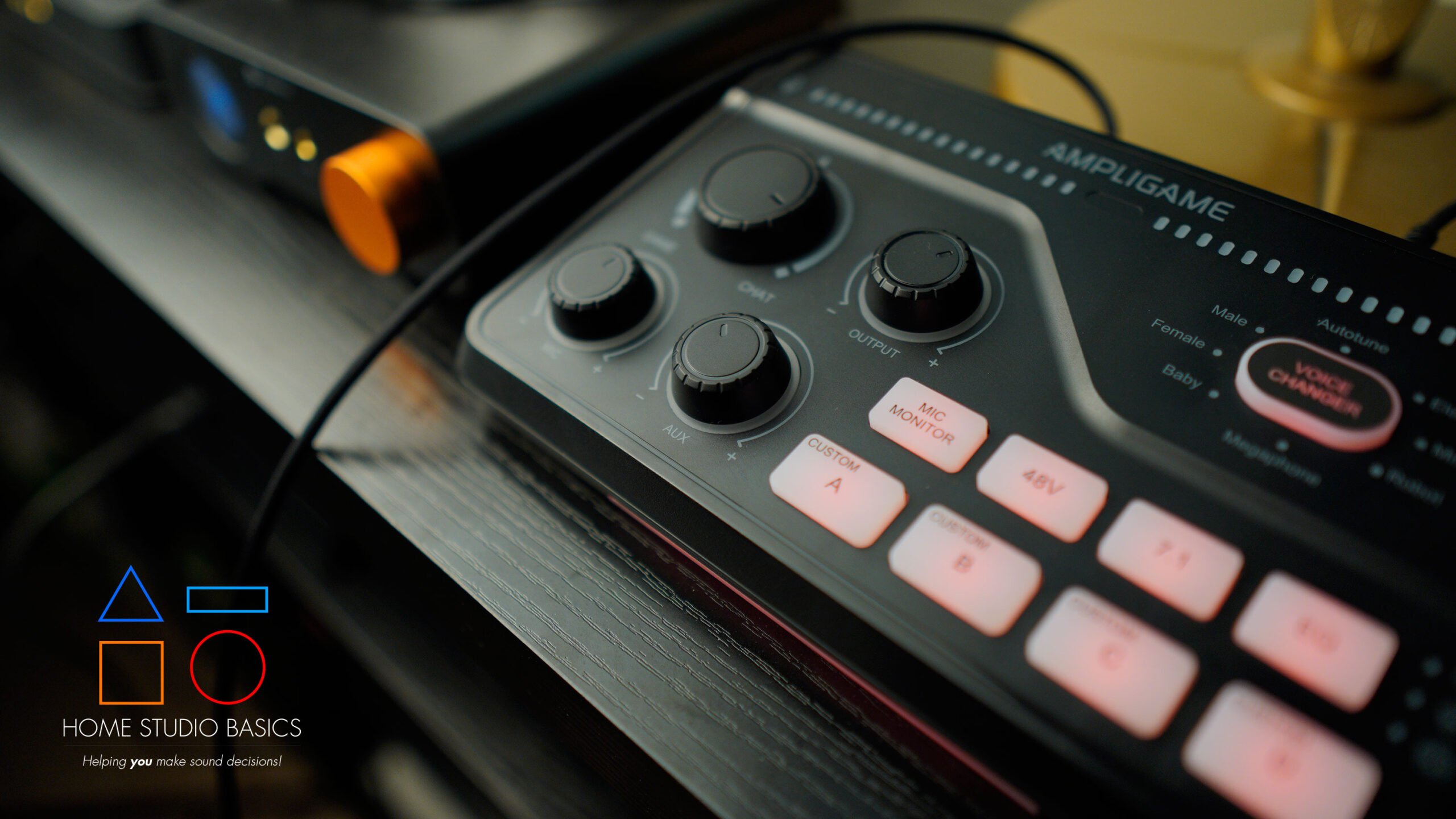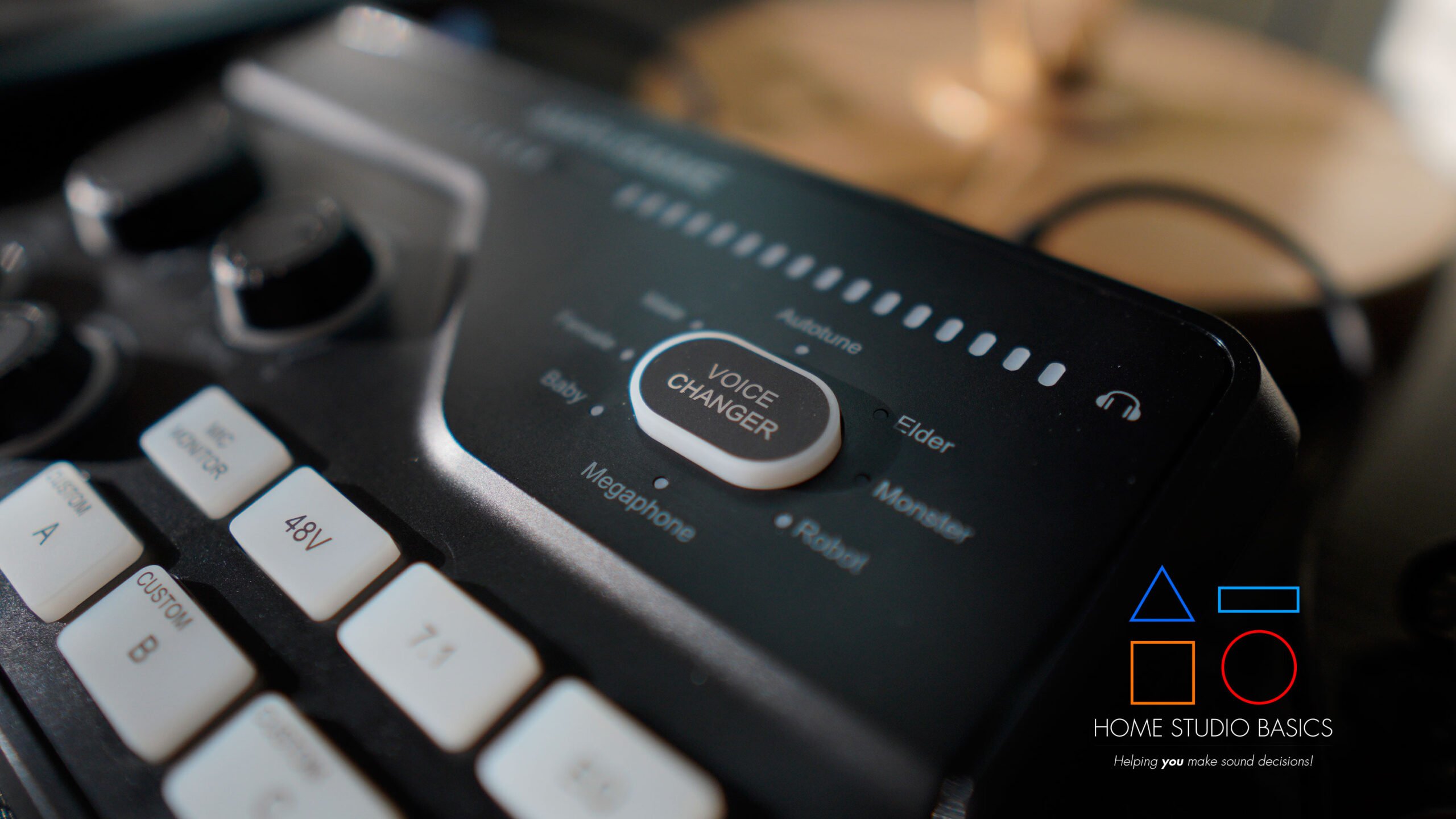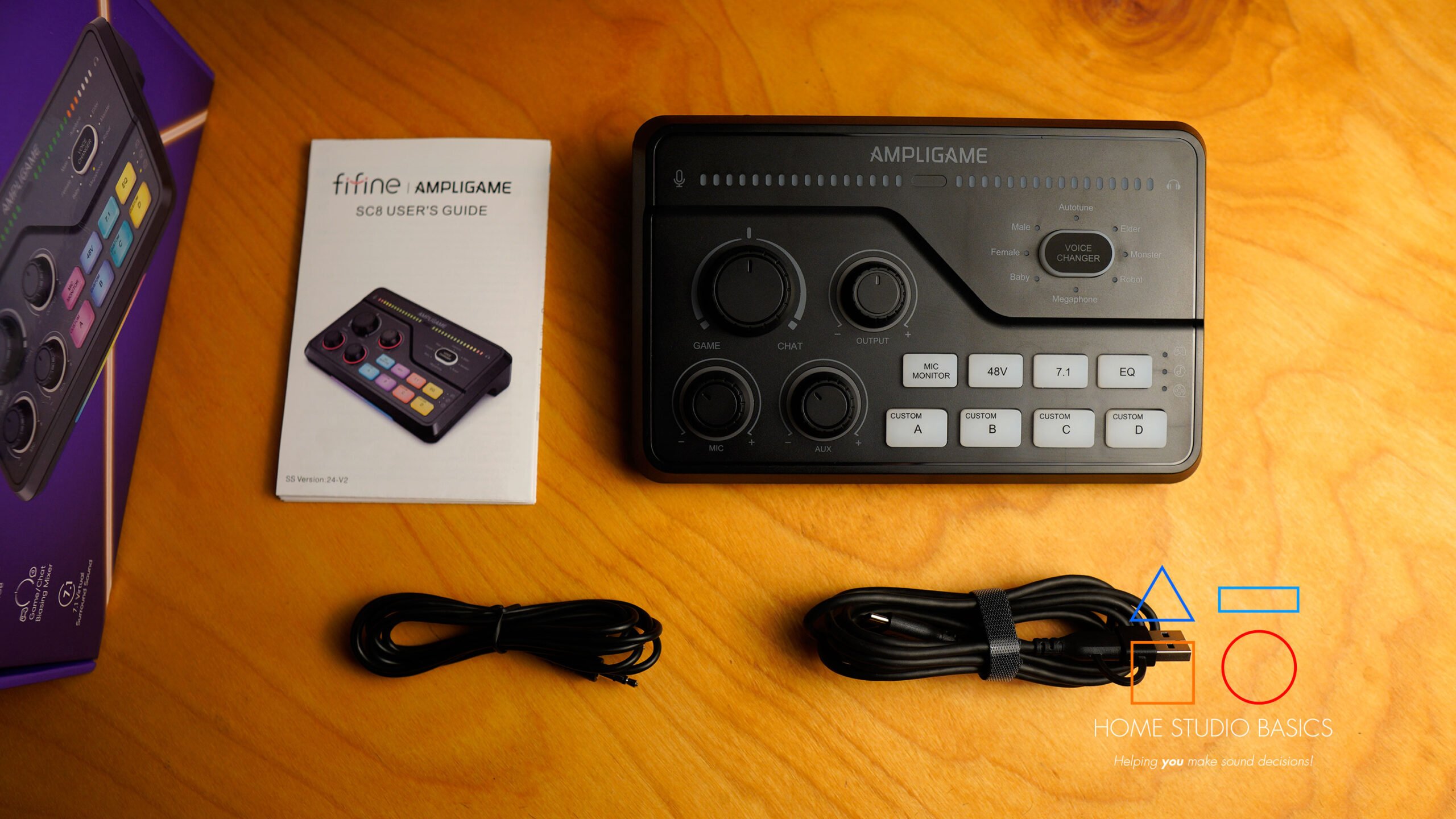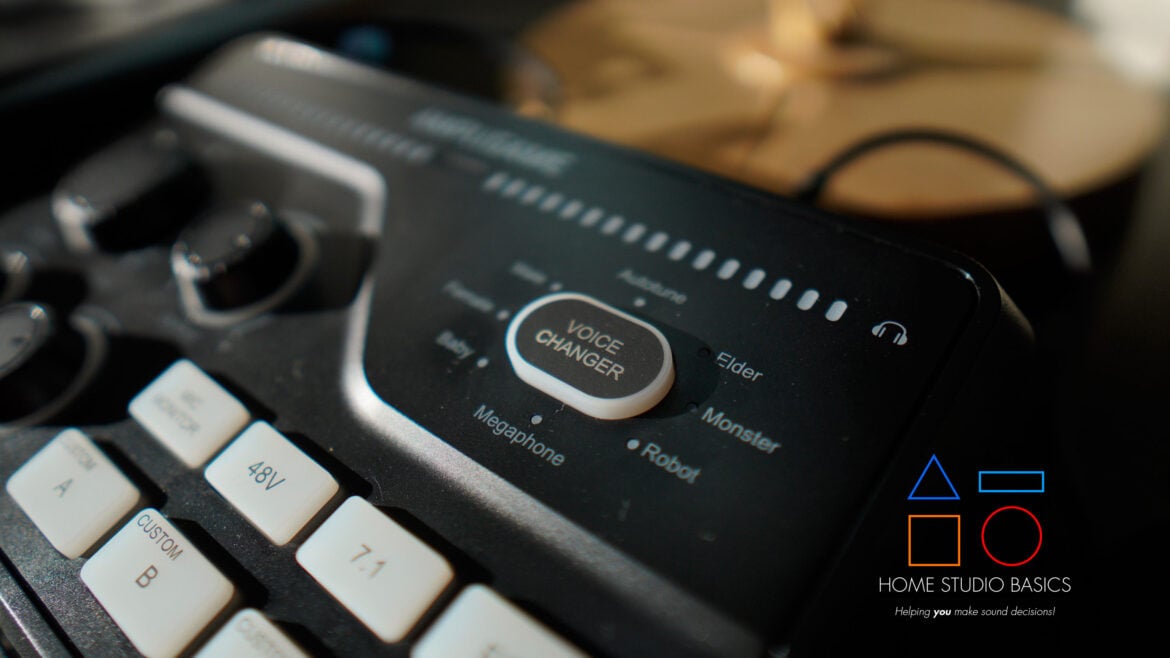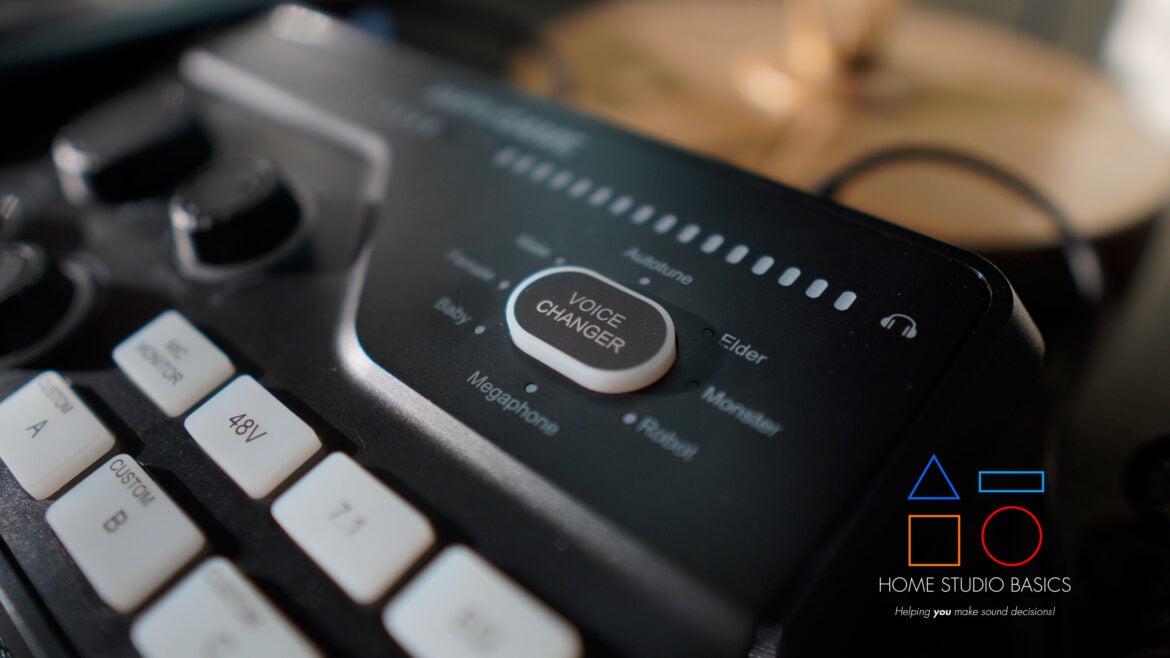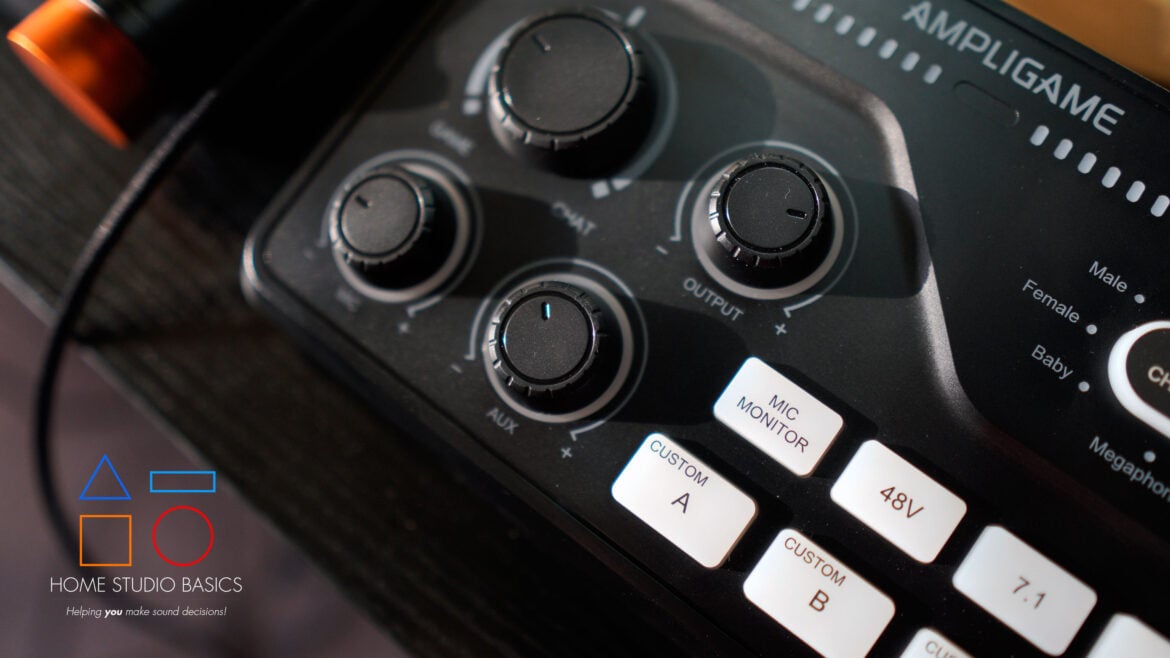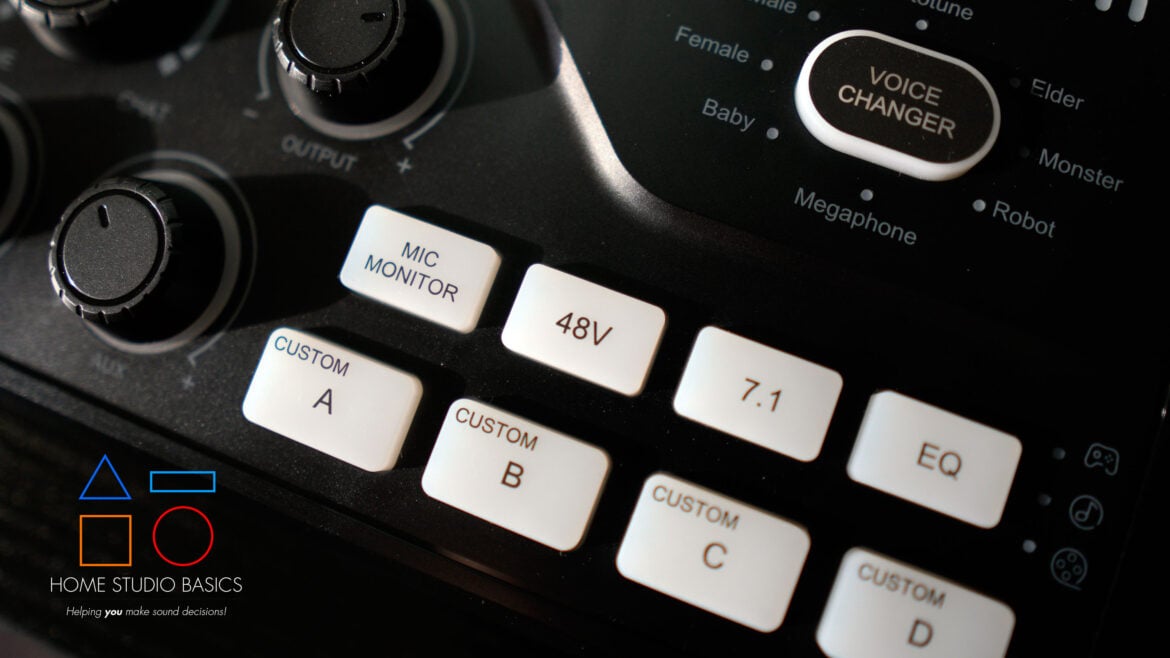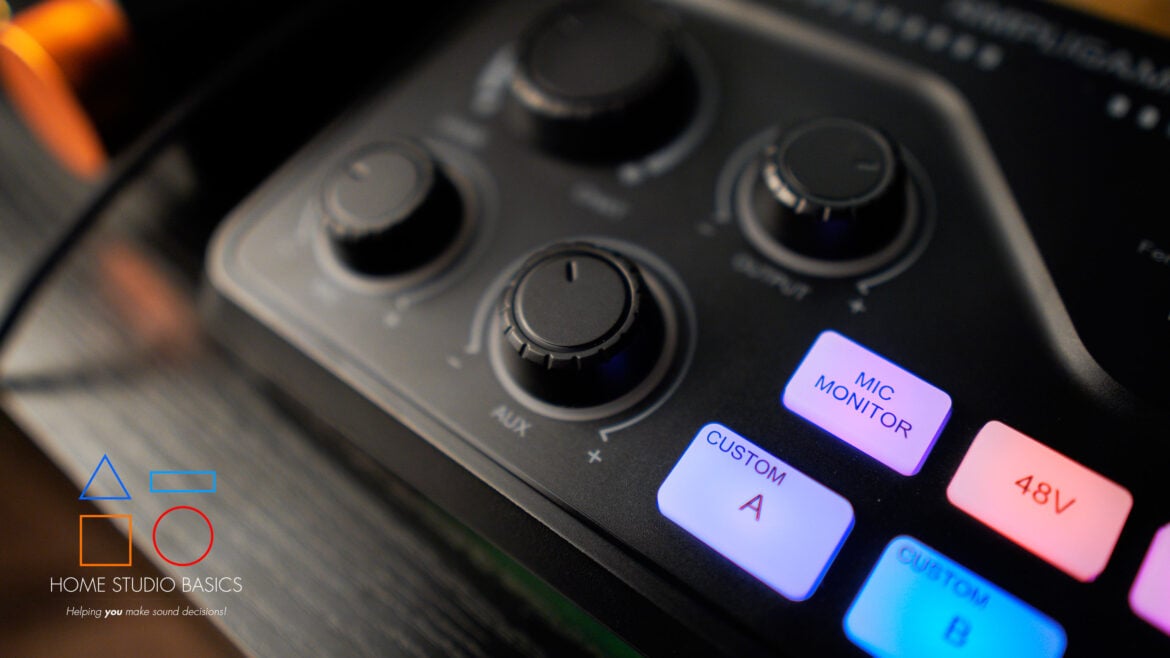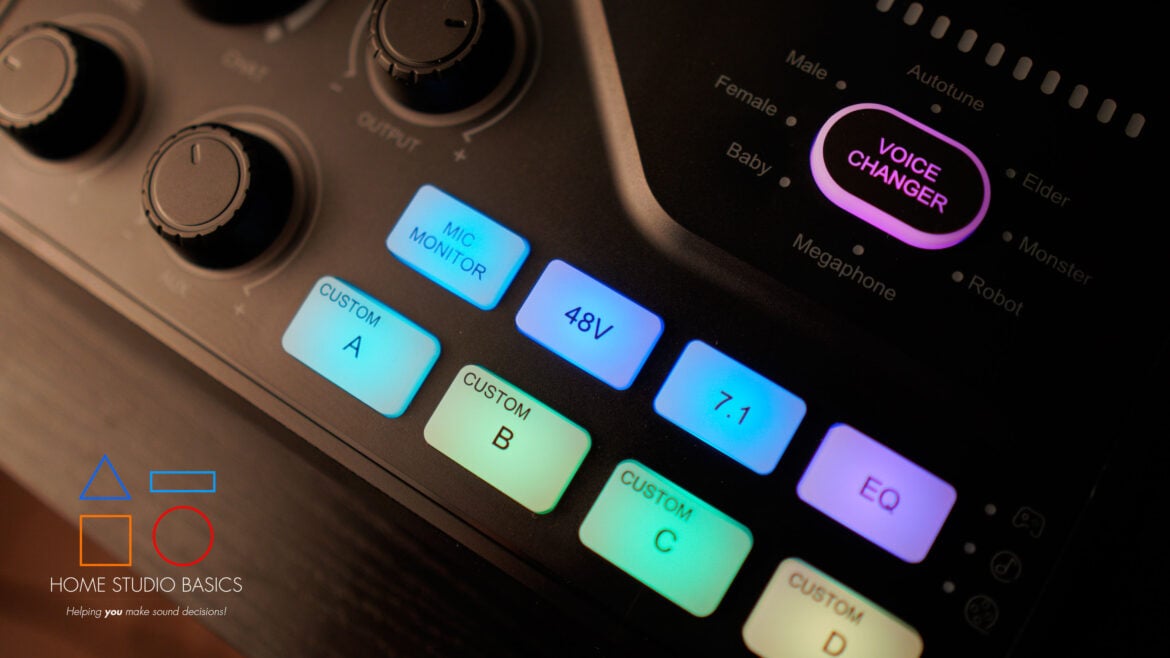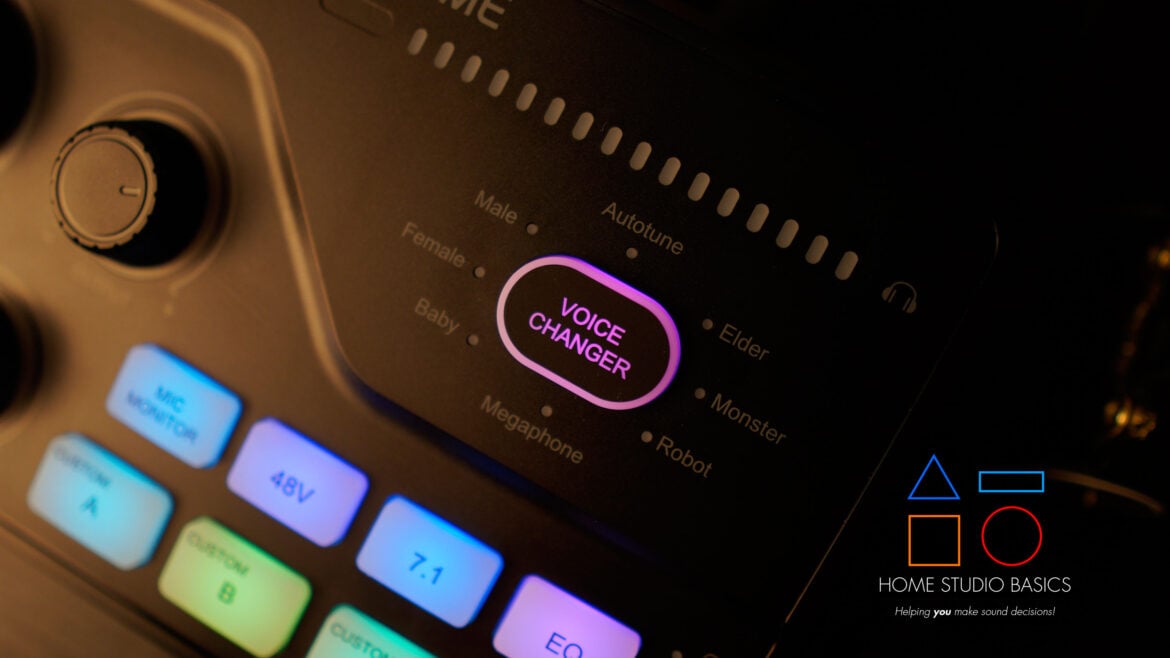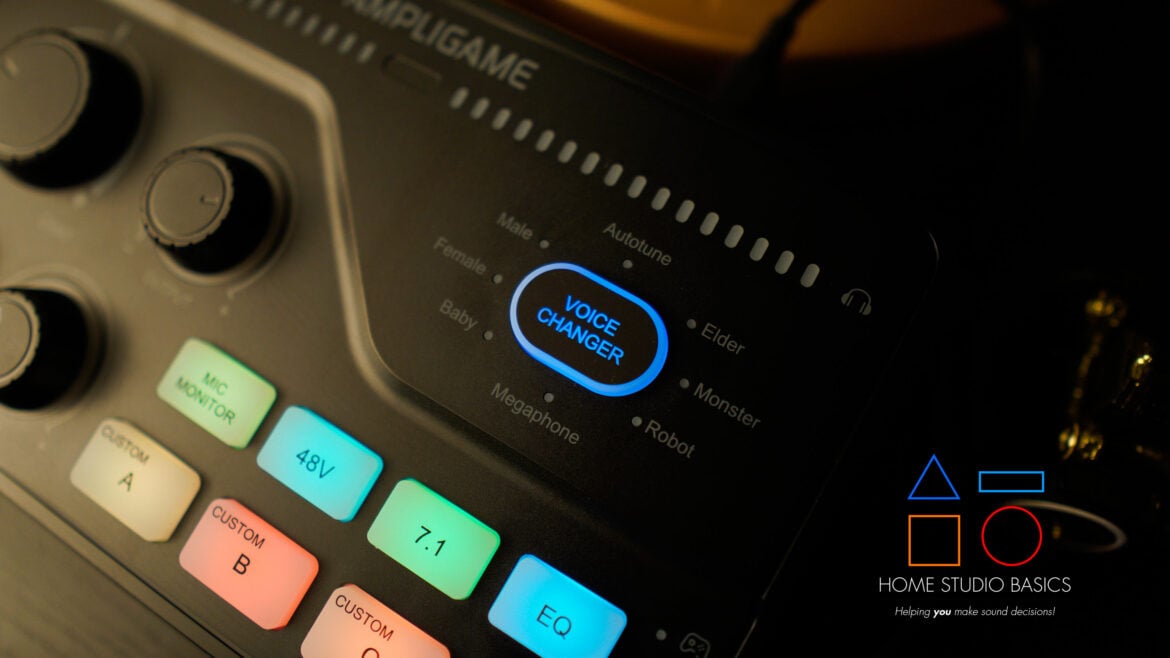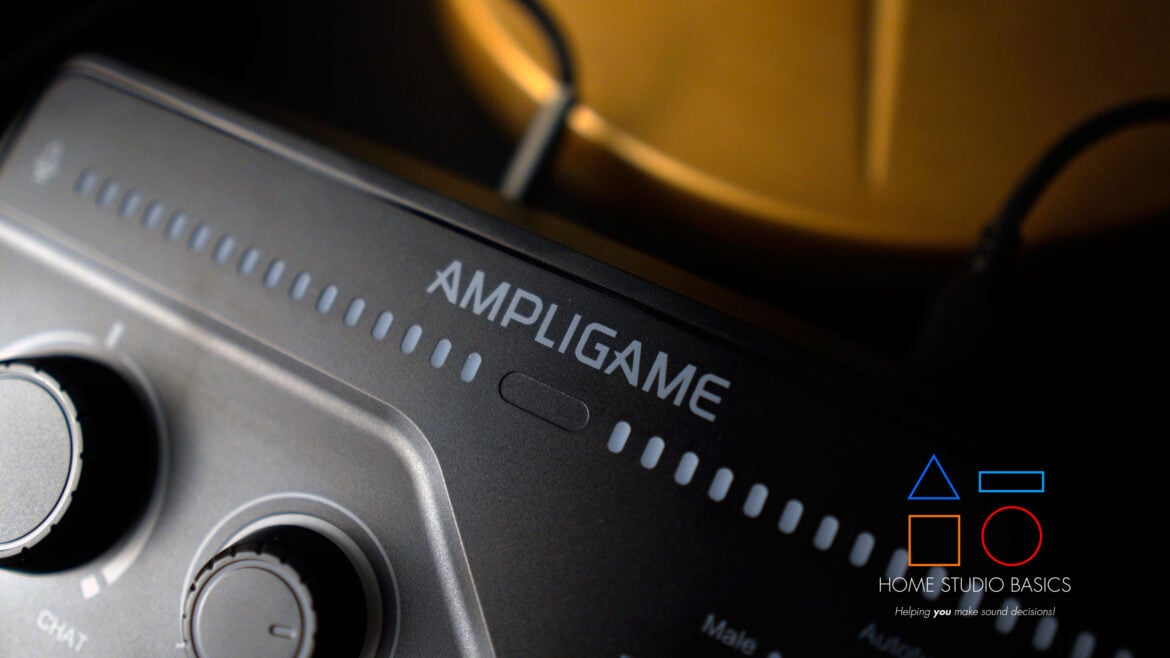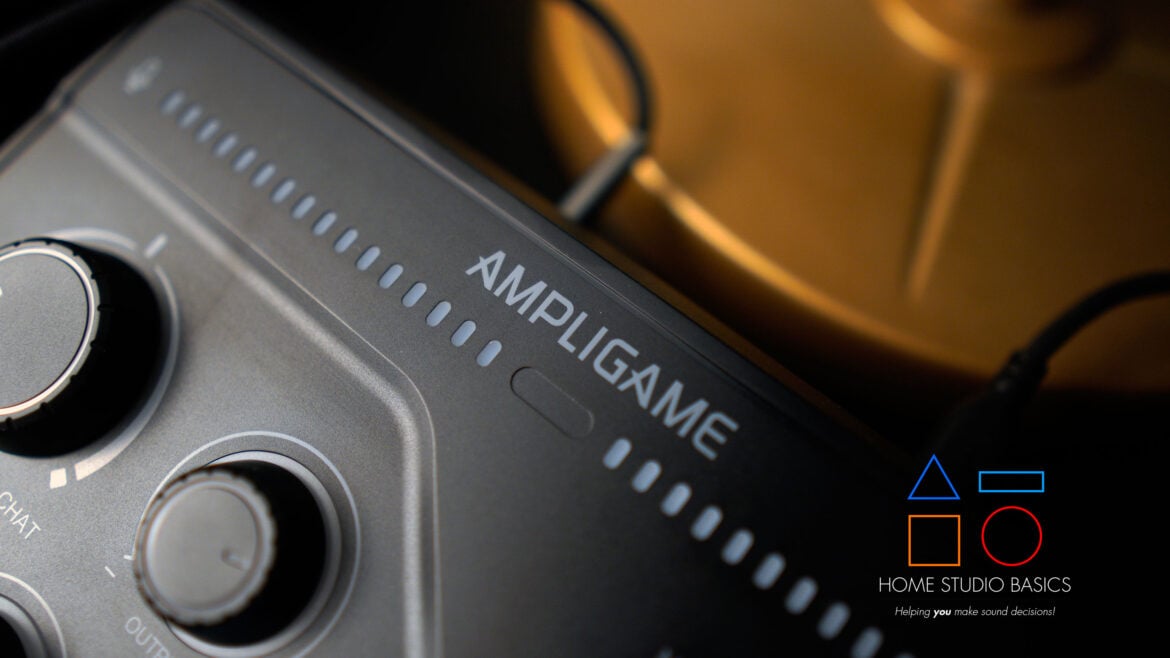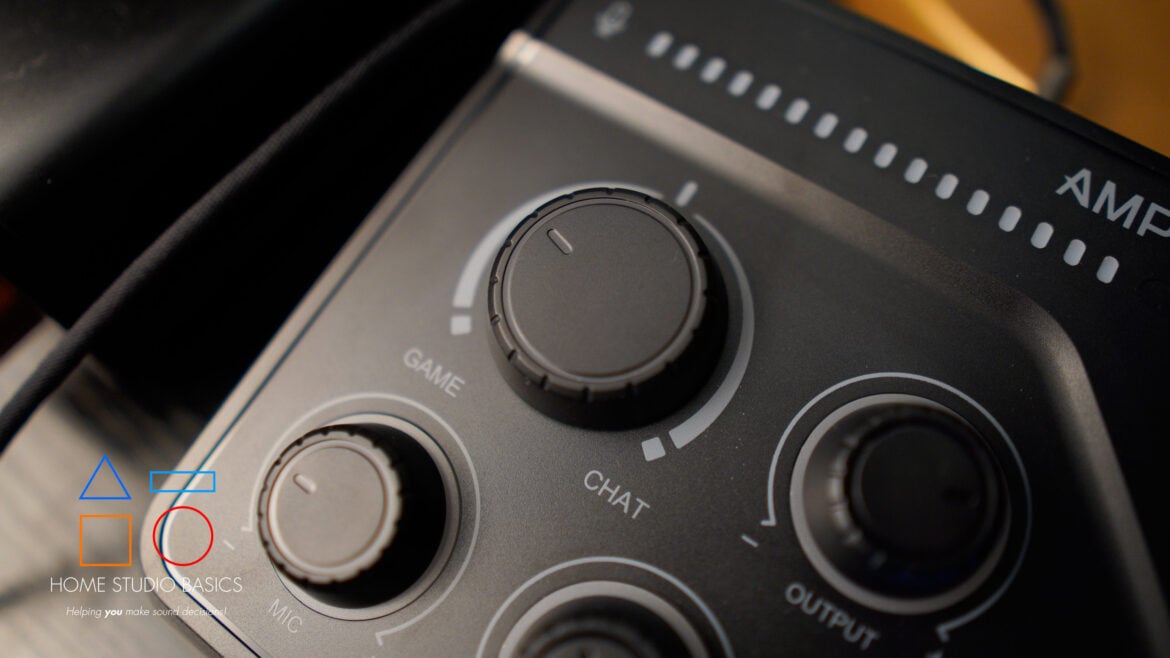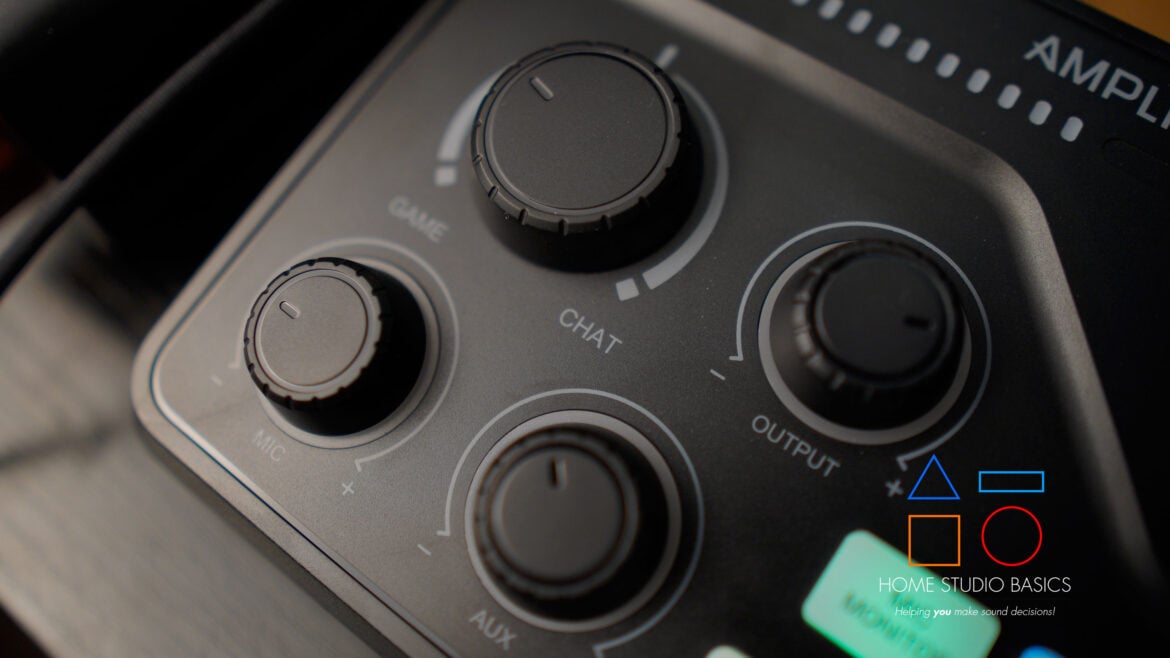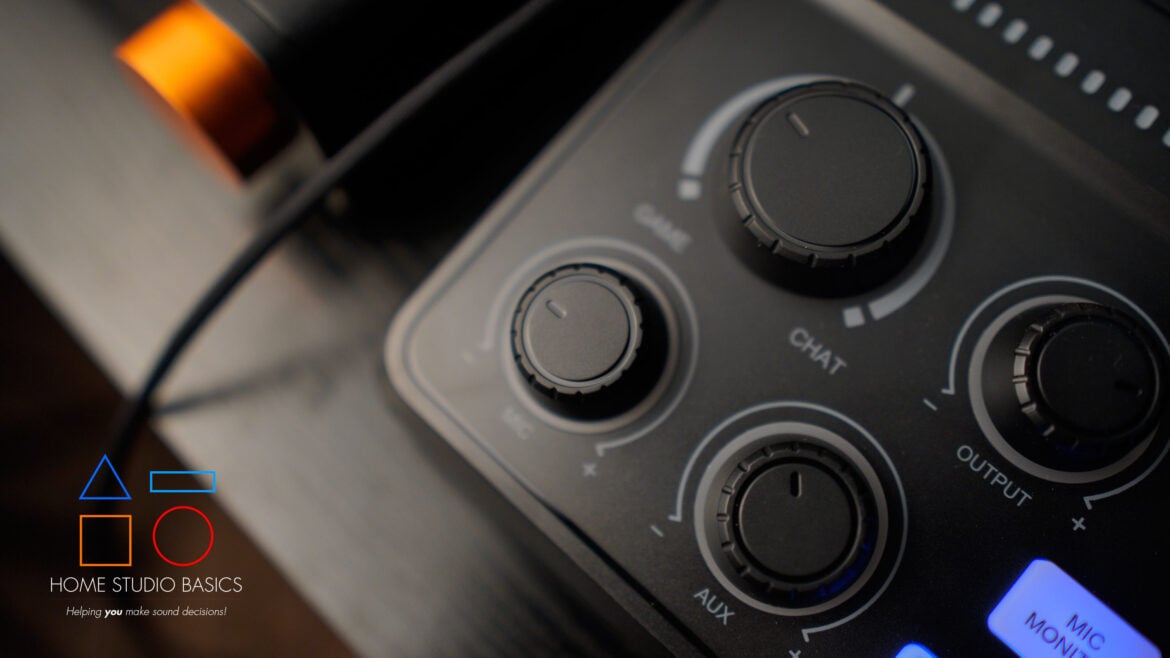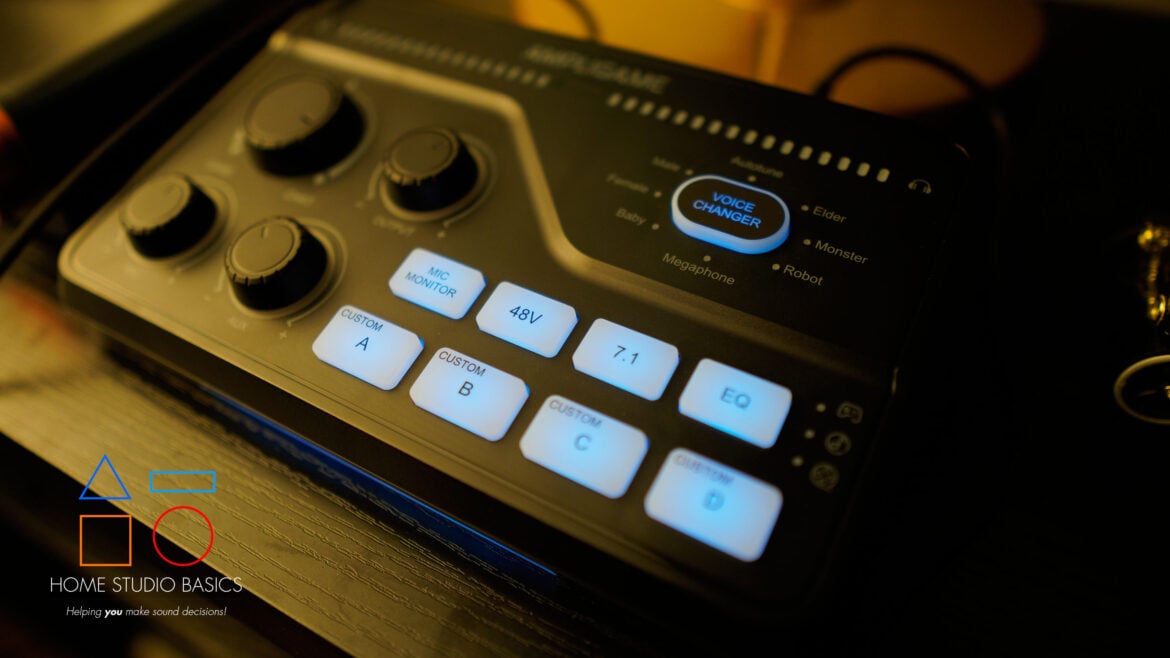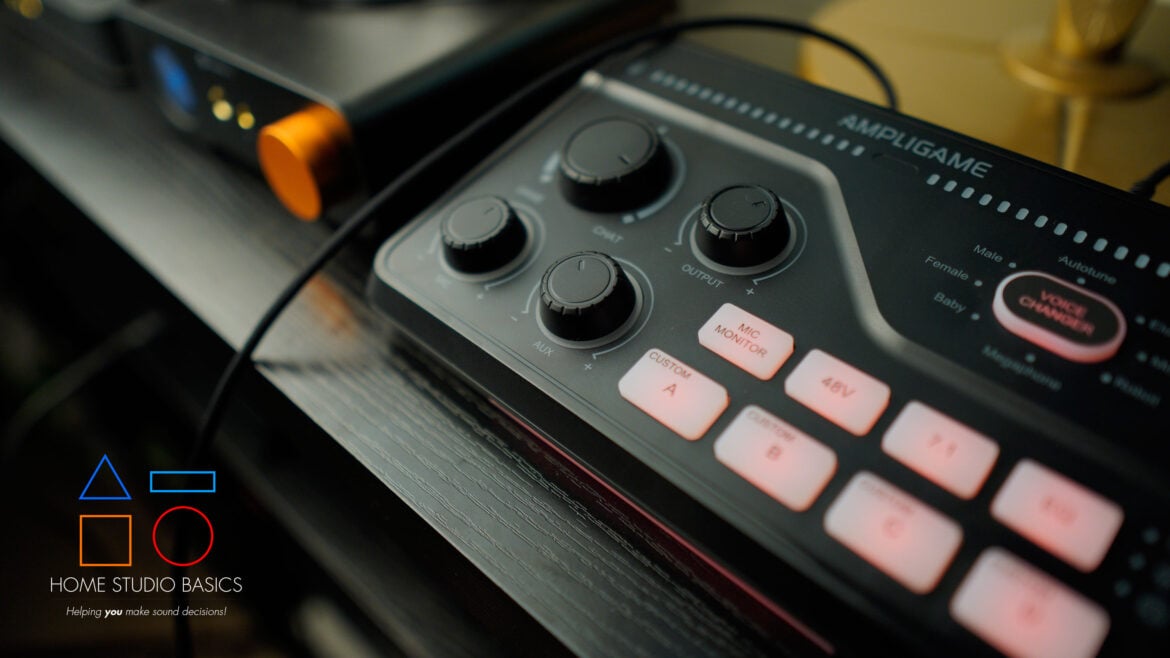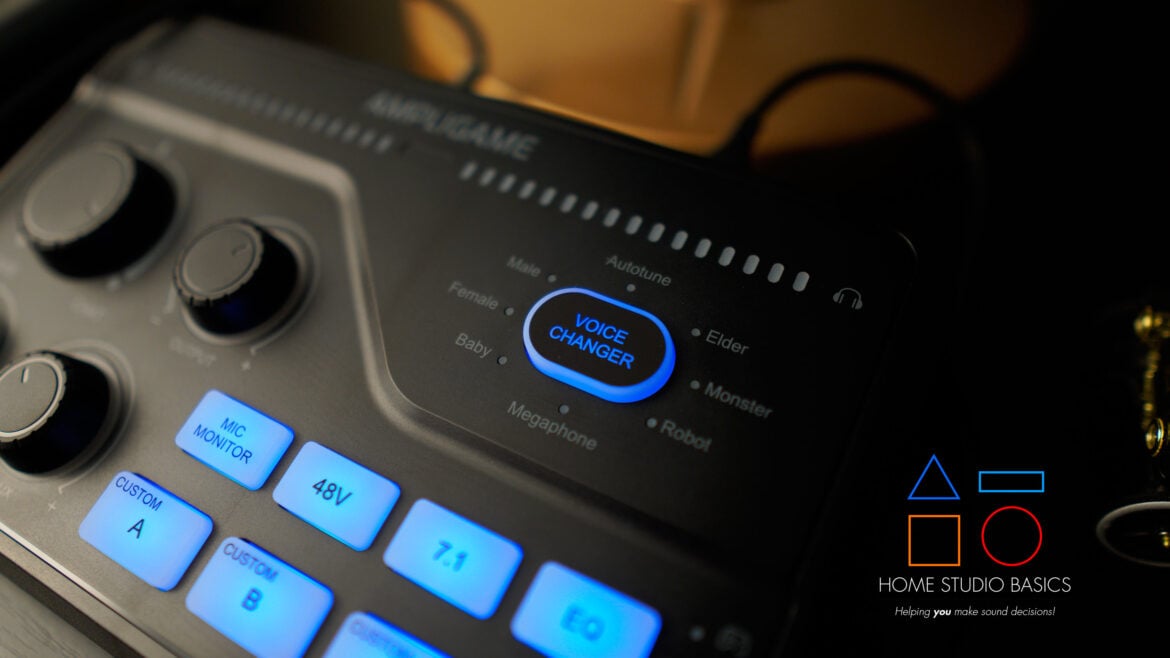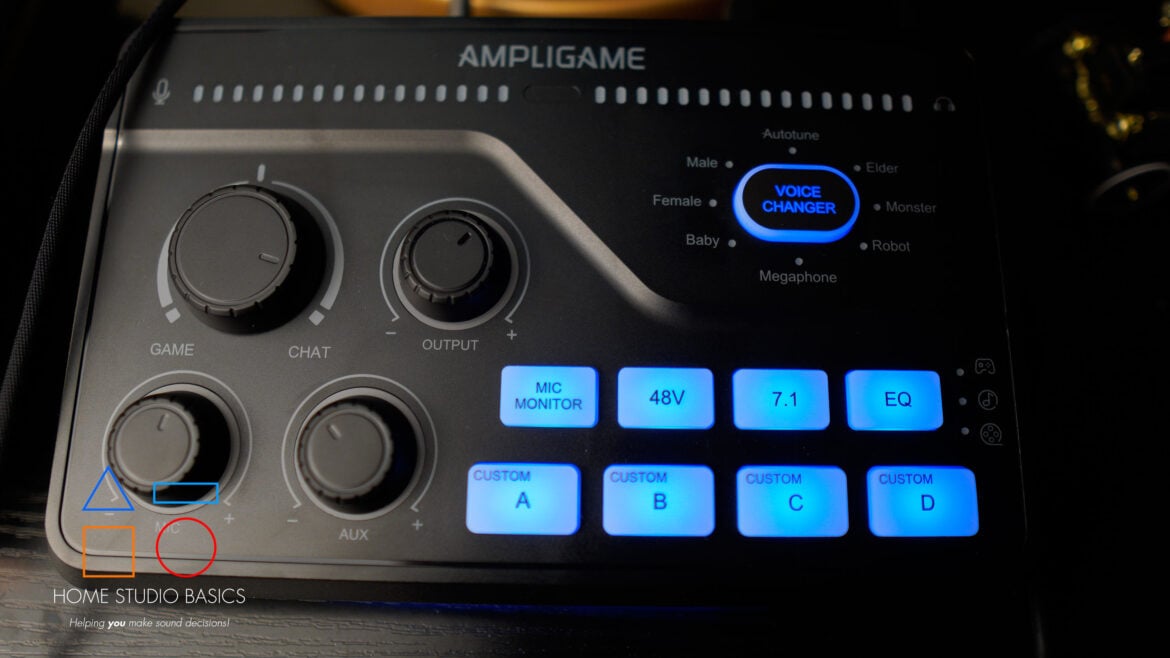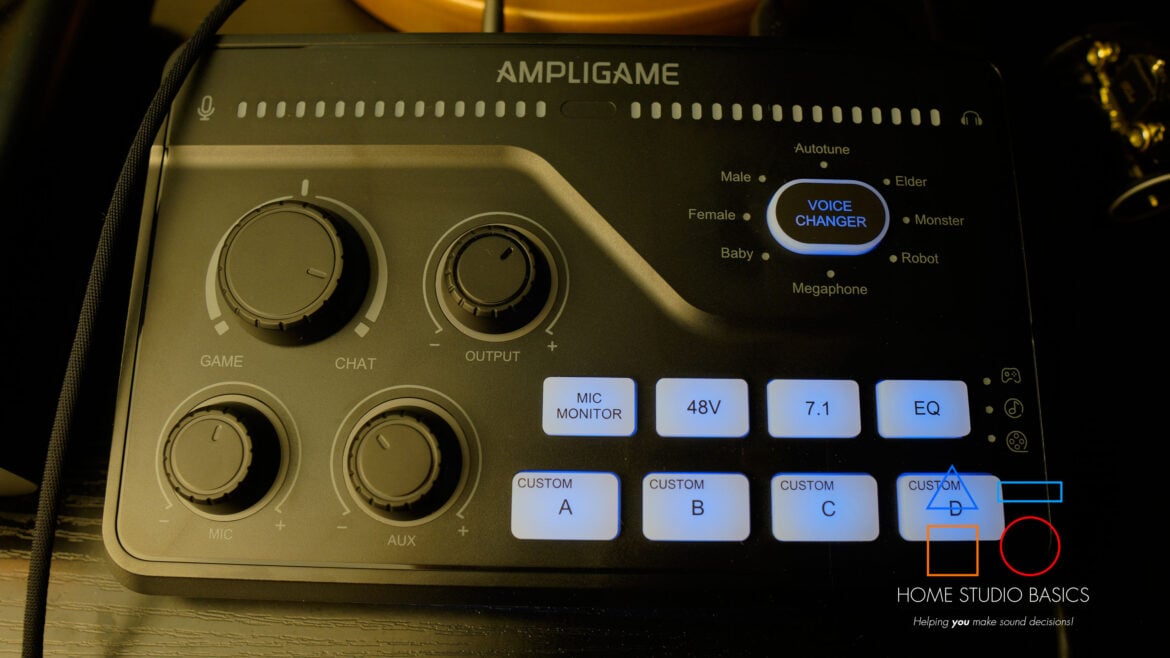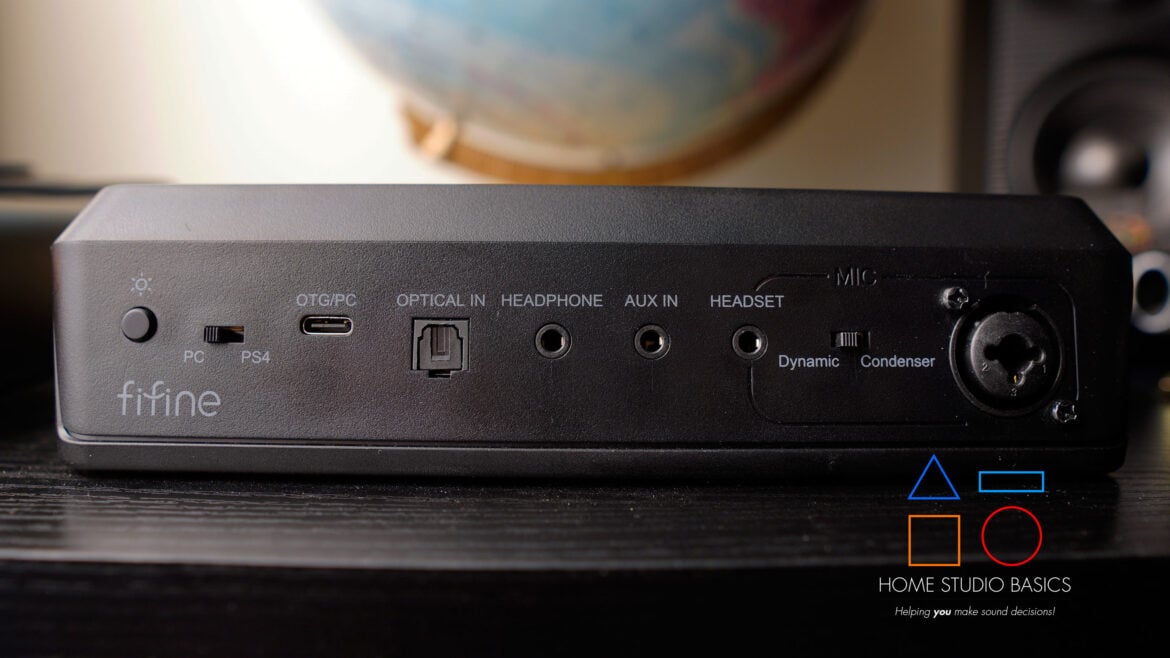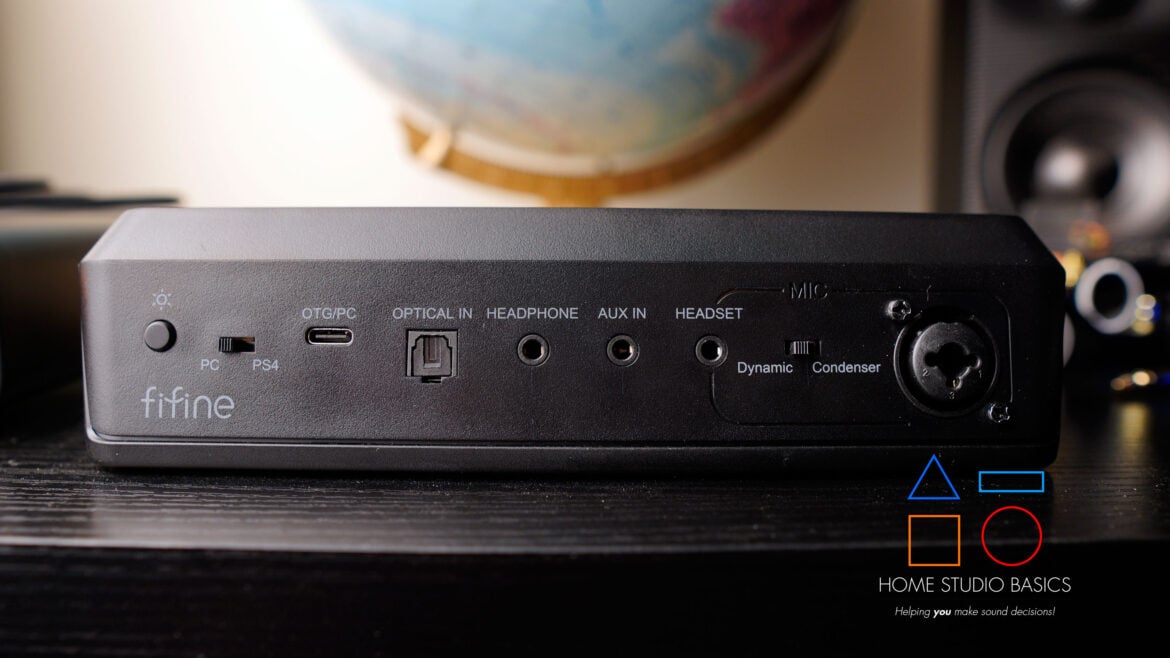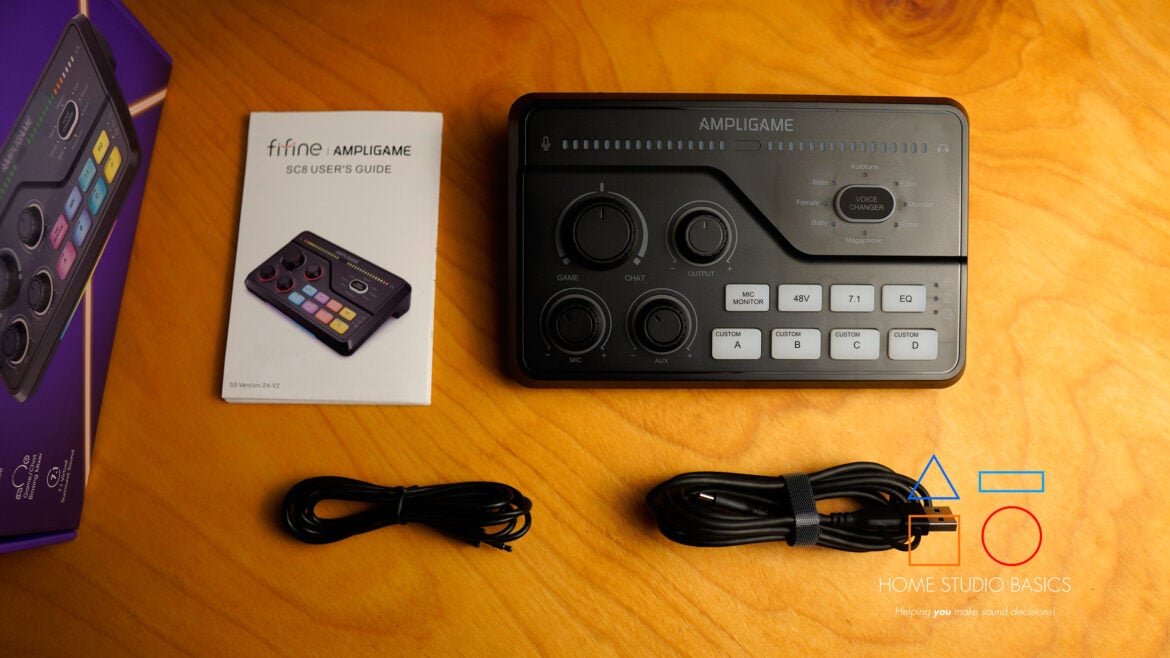Greetings mate and Welcome aboard!
Stuart Charles here, HomeStudioBasics.com helping YOU make sound decisions, so…
Is Fifine’s Ampligame SC8 a viable option for producers working inside FL Studio? Does it work with other DAWs that support ASIO4ALL?
And how does it fare as strictly an audio interface or gaming DAC?
Beyond that, can it serve as a reliable tool for streamers, podcasters, or general content creators who want simple, plug-and-play control over their mic and system audio?
This overview will touch on where the SC8 fits — whether it’s being used for production, streaming, gaming, or general desktop sound management — before diving into how it actually performs in a studio workflow. We’ll also cover build quality, features, versatility, and more.
By the time you’re finished reading this article, you’ll know if it’s right for you.
If it isn’t, I’ll point you in the direction of something that is.
With that, let’s dive in!
All specs, pricing, and box contents toward the end.
What Is It? / Front Panel
Fifine’s Ampligame is a compact, convenient mixer, audio interface, and gaming DAC rolled into one.
Featuring a Game/Chat knob, Output knob for sound levels, mic knob for input sensitivity/quick muting with a short press, the Optical/AUX Gain Knob for level adjustment of external digital or analog inputs, it’s practical and incredibly convenient.
The input metering feature on the device itself is extremely useful, as you can gauge mic levels easily and make quick adjustments on the fly.
Additionally, the SC8 has a Mic Monitor button, which sends the mic signal directly to the device’s headphone output. This is handy if you don’t have studio monitors, but in my setup, I’m using the SC8 for recording while monitoring and playing back through the Universal Audio Volt 2/HS7 combo. You can still turn the mic monitor off if you prefer to hear everything through another device.
The direct monitoring feature also allows you to hear yourself in real time while recording or streaming, but you may or may not actually like this (I know I prefer to leave it off). You can do this inside a program like FL Studio with a simple toggle, but make sure to turn it back on to hear the recorded playback.
The 48V Phantom Power button, perhaps the niftiest feature in a device like this, provides the juicy juice that condenser microphones need to reach line level.
- Required Reading: What Is 48v Phantom Power?
For immersive audio, a 7.1 Surround Sound Switch activates virtual surround processing, while the EQ Mode Switch toggles between preset equalization settings to tailor your listening experience. A Customized Button allows for user-defined shortcuts or profiles, and the Voice Change feature provides real-time vocal effects for streaming or gaming. Included are Autotone, Elder, Monster, Robot, Megaphone, Baby, Female, and Male options.
For the custom banks (A-D), hold down a button and start recording. Whatever you recorded can be played back by pressing that same button.
Back Panel
The back panel contains a USB-C port for connection to PC or console, XLR Mic input for dynamic or condenser microphones, a mic type switch you can use to toggle between a Dynamic or Condenser mic, and a headphone output for direct monitoring (discussed earlier).
The SC8 also features a PS4/PC mode switch, an auxiliary input for routing in external audio from a phone or music player, a headset output for gaming headsets with combo jacks, and an optical input for use with a PS4 or other devices that support optical output.
Last but certainly not least, the SC8 lights the f up like Nicolay with a fat blunt in his mouth, and features an array of different modes and colors. Choose between Red, Yeller, Light Green, Dark Green, Cyan, Magenta, Purple Nurple, Flashing Colours, Pulsating Colors, Breathing Colours, etc.
That said, how does it actually perform in real-world testing?
Let’s take a listen.
Sound
Let’s get the not-so-good out of the way first.
The SC3 can function inside FL Studio with some setup, but it’s important to separate two different aspects of compatibility: software recognition and sound quality.
From a software standpoint, the SC3 is a WDM-only device, which means it doesn’t have a native ASIO driver.
Initially, FL Studio may not detect the input at all, the levels won’t show in the Mixer, and the Playlist may not record any waveform.
These issues are driver-related, not hardware-related, and can be solved by using ASIO4ALL with exclusive control of the SC3 input.
Once ASIO4ALL is configured and no other applications are using the mic, the SC3’s input becomes visible in FL Studio, the levels register correctly, and the device can be used to record.
For me, this required a hard reboot of the program, my PC, etc.
A clean slate, if you will. After that, the SC8 works as intended.
However, once it’s fully recognized, the quality of the recorded audio depends entirely on the device’s preamp and analog-to-digital conversion circuitry.
As a budget USB mixer, the SC3’s preamps and ADCs are limited compared to professional interfaces like the Universal Audio Volt 2.
This means that even when all settings are correct (proper gain, buffer size, and sample rate), recordings may sound thin, harsh, or slightly distorted. Users who require clean, high-fidelity recordings may find the SC3 sufficient for casual or practice use, but for professional-quality sound, a dedicated interface with proper preamps and ADCs is recommended.
In short, the SC3 can work in FL Studio for recording, but users should understand that:
- Driver setup is essential — ASIO4ALL must be configured correctly and exclusively.
- Hardware limitations remain — the preamps and ADCs may affect the final sound quality.
I personally tested all of this out with my Shure SM57, and the final recording wasn’t quite up to snuff, even after painstakingly adjusting the gain in numerous positions, experimenting with the distance between myself and the mic, etc.
It’s unfortunate because I was planning on recording an entire song with the Ampligame, but a quick demo showing the stark contrast between it and the Volt 2 will have to suffice.
You be the judge:
Demo #1
- Record Date: 10/2025
- Mic: Shure SM57
- Preamp: Triton Audio Fethead
- Interface: Fifine Ampligame SC8
- DAW/Sequencer: Audacity
- Pop Filter/Windscreen: Yes, Shure A81WS
- Gain: 25%
- Mic Stand: InnoGear Scissor Arm
- Shockmount: No
Demo #2
- Record Date: 10/2025
- Mic: Shure SM57
- Preamp: Triton Audio Fethead
- Interface: Fifine Ampligame SC8
- DAW/Sequencer: FL Studio
- Pop Filter/Windscreen: Yes, Shure A81WS
- Gain: 25%
- Mic Stand: InnoGear Scissor Arm
- Shockmount: No
Demo #3
- Record Date: 10/2025
- Mic: Shure SM57
- Preamp: Triton Audio Fethead
- Interface: Universal Audio Volt 2
- DAW/Sequencer: FL Studio
- Pop Filter/Windscreen: Yes, Shure A81WS
- Gain: 75%
- Mic Stand: InnoGear Scissor Arm
- Shockmount: No
You can clearly hear the difference. The SC8 has this subtle crackly character and sounds a bit distorted vs. the very clean signal coming out of the Volt 2. I’m not exactly sure what this is, but I’m betting it’s probably the preamps. They’re just not as good as the Volt 2’s.
Keep in mind, all of these recordings came after quite a bit of tinkering over the last few days trying to get the levels perfect with the Ampligame. This was the best I could do. The Volt 2 and SM57 are my main setup for rapping, so they need hardly any tweaking.
Interestingly enough, recordings made with the SM57 through the Ampligame inside Audacity may sound slightly cleaner or fuller compared to those captured in FL Studio.
When recording with the SM57 through the SC8, you may notice that audio captured in Audacity sounds slightly cleaner than what you get in FL Studio. This isn’t due to ASIO4ALL itself — the driver is clean and faithfully passes the signal — but rather the limitations of the Ampligame’s hardware.
The device relies on WDM-only routing rather than a native ASIO driver, and its budget preamps and simpler analog-to-digital converter can introduce subtle distortion, crackling, or brittleness, particularly in the upper frequencies.
While ASIO4ALL allows FL Studio to interface with the SC8, the signal it delivers still reflects the headroom and fidelity constraints of the device, which is why the Volt 2 or other professional interfaces sound noticeably smoother, clearer, and more transparent.
As a Gaming DAC
It’s no coincidence that this product is named “Ampligame“, because I think it’s probably the best use case for this specific device.
If you’re a casual gamer or enjoy FPS shooters with a headset, I think the SC8 is more than adequate, especially since it provides 7.1 virtual surround, an optical input for use with a console, in addition to just looking like it was specifically targeting this demographic.
The large Game/Chat knob is ideal for quickly adjusting levels, and the intuitive nature of its “workstation” aesthetic means everything is right there at your fingertips.
Other products like Fosi’s K7, and Creative’s SoundBlaster G8 employ a similar appearance, and I thoroughly enjoy this type of presentation.

Fosi Audio K7

The G8
It makes setup and adjustment quick and seamless, so the Ampligame gets high marks in this department.
That said, there are some things to keep in mind:
The SC8 is primarily designed for headset use, meaning it works best with headsets that have a built-in mic. It also does well if you plan on using an XLR mic on your desktop.
For reference, I used the StarEngine E5000 with my PS4.
Standalone boom-style mics, like the V-Moda Boom Pro or Antlion ModMic, generally won’t work directly because the device doesn’t provide a separate 3.5 mm or TRS mic input for those types of microphones. Essentially, the SC8 expects a mic signal either from a headset or the dedicated XLR input, so using other external mics requires additional adapters or an interface — it’s not natively supported.
Because of this, plan your setup accordingly.
Final Verdict
The Fifine AmpliGame SC8 is a versatile, all-in-one solution that excels for casual gaming, streaming, and general content creation.
Its intuitive controls, virtual 7.1 surround, and direct monitoring features make setup quick and easy, particularly for users relying on headsets or the built-in XLR mic input.
However, for professional recording, especially vocal or instrument tracking, its budget preamps and ADCs introduce subtle distortion and brittleness that can’t match interfaces like the Universal Audio Volt 2. If your priority is convenience and flexibility across gaming and desktop audio, the SC8 is a solid choice.
If high-fidelity audio capture is critical, a dedicated interface remains the better option.
Fifine Ampligame SC8
Price: Check Amazon! | Check eBay!
Ampligame SC8
User Guide
USB Type-B to Type-C Cable
3.5mm – 3.5mm Cable
Specifications
Microphone Input
- Frequency Response: 25Hz – 20kHz
- Microphone Interface: XLR or 1/4″ Mic
- S/N Ratio: 75dB
- THD+N: <0.2%
Headphone Output
- Frequency Response: 20Hz – 20kHz
- Headphone Interface: 3.5mm
- S/N Ratio: 93dB
- THD+N: <0.2%
- Power: 38mW @ 32Ω
Auxiliary Input or Optical Input
- Frequency Response: 20Hz – 20kHz
- S/N Ratio: 90dB
- THD+N: <0.2%
OTG
- Data Transmission: USB 2.0 or above
- Sampling Rate: 44.1 – 48kHz
- Bit Depth: 16/24 Bit
Well that’s about it for today my friend! I hope you’ve enjoyed this Fifine Ampligame SC8 Review and came away with some valuable insight.
Questions? Comments? Requests? Did I miss the mark on something? Please let me know down below or Contact me!!
Is the Ampligame a viable solution for your setup? I would love to hear from you. Until next time..
All the best and God bless,
-Stu
